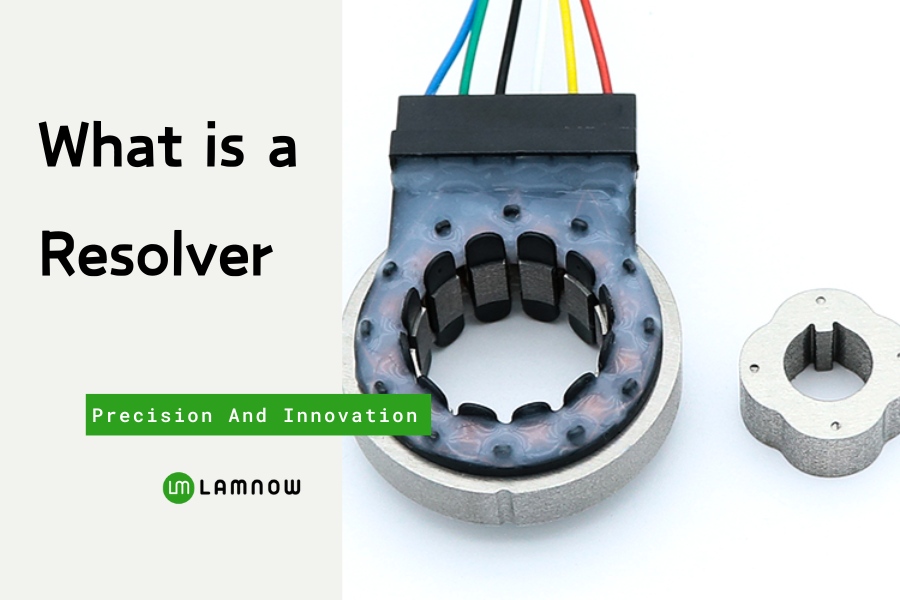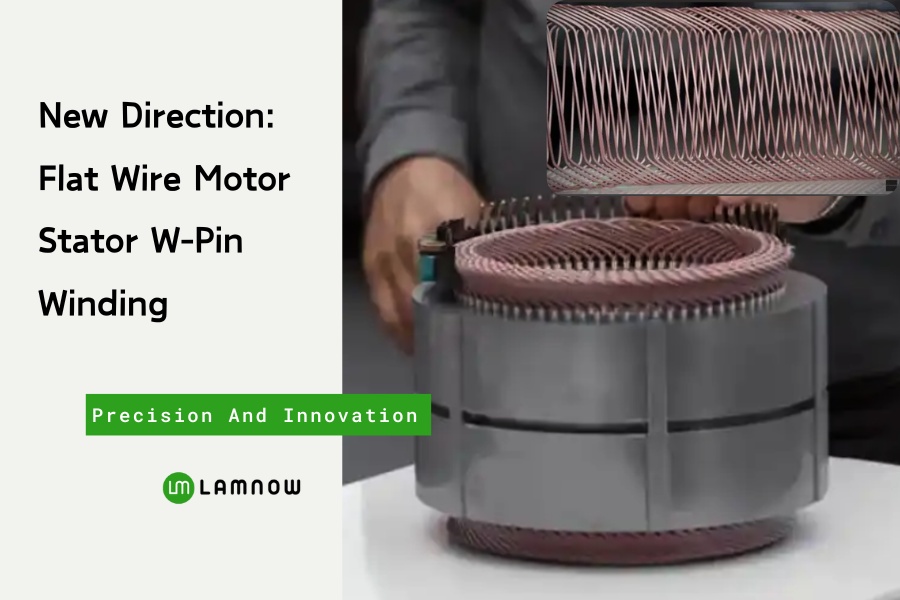What is a resolver? It is a precision sensor that uses changes in magnetic reluctance to detect position. Do you know how it provides accurate position feedback in motors?
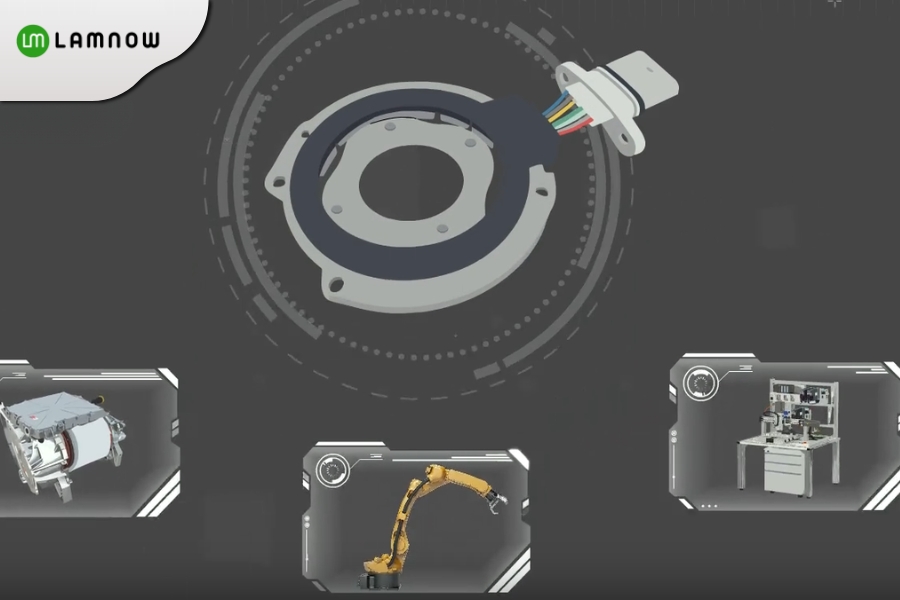
How Does a Resolver Work?
A resolver(rotary transformer), also called a synchronous resolver, is an electromagnetic sensor that works based on the law of electromagnetic induction. When the magnetic flux changes, an induced electromotive force appears in the conductor.

Its core principle is the interaction between the rotating magnetic field and the stationary and rotating windings. This interaction enables the transfer of electrical energy and the conversion of angular position information.
Detailed working process:
Excitation signal input: The excitation coil on the stator receives an external sinusoidal AC voltage, usually 10 kHz to 20 kHz. This produces an alternating magnetic field in the stator, which is the basis for subsequent signal induction.
Magnetic field coupling: The rotor, as a magnetic conductor, sits at the center of the stator’s magnetic field. As it rotates, its magnetic properties change the coupling path of the field. The magnetic field transfers from the excitation coil to the sensing coils, with the coupling degree determined by the rotor’s angular position.
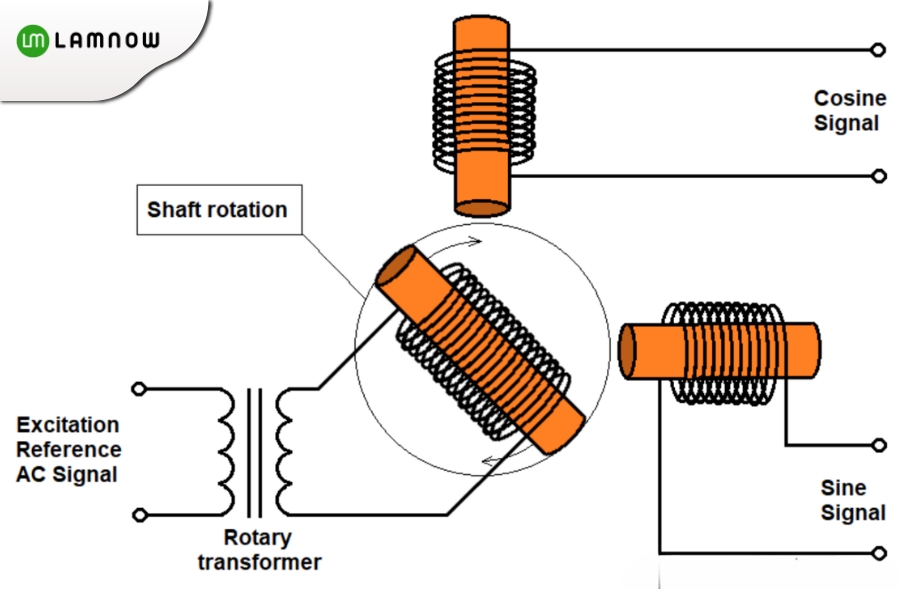
Detection signal generation: Two detection coils on the stator are arranged 90 degree apart. They generate induced voltages in sine and cosine relationships to the rotor’s angle. The output amplitudes equal the excitation amplitude multiplied by the sine or cosine function.

Signal calculation: The sine and cosine signals go through a Resolver-to-Digital Converter (RDC), which calculates the mechanical angle, usually with an arctangent algorithm. The circuit can also convert analog signals into digital form for further processing.
Real-time angle updates: As the rotor rotates, the detection signals change continuously, allowing real-time measurement of rotor position and speed.
Structure of a Reluctance Resolver
A reluctance resolver mainly consists of stator,rotor,housing, and connection.

Stator
The stator consists of two main parts: the stator core and the winding. The core is usually made of 0.5mm silicon steel laminations, while the winding is mainly composed of copper coils.
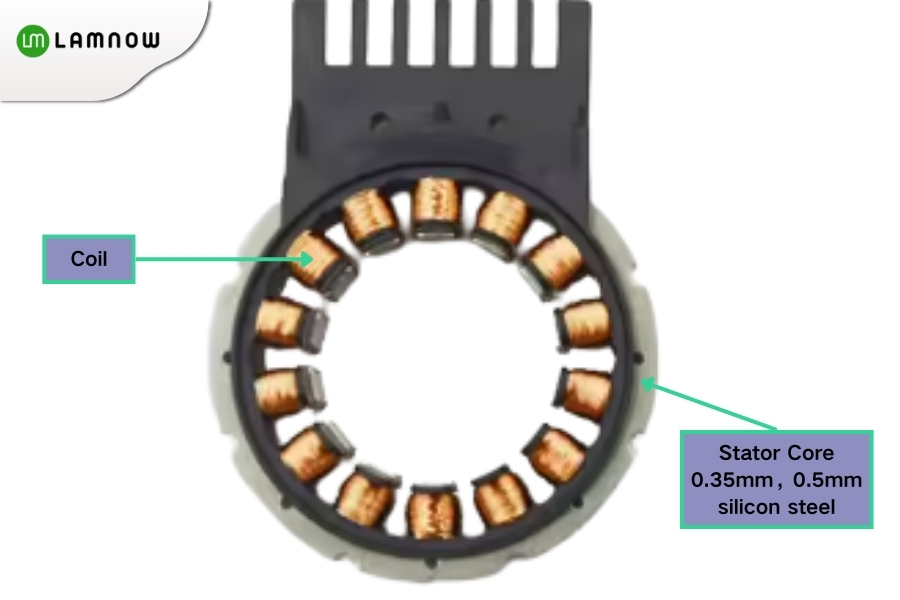
Excitation coil: Generates the alternating magnetic field. Common excitation frequencies are 400 Hz, 3000 Hz, and 5000 Hz.
Detection coils: Usually, A resolver control transmitter has one primary winding and two secondary windings. Two orthogonal windings detect changes in the magnetic field and output signals representing the rotor’s position
Rotor:
Made of laminated magnetic sheets or wound components. It couples the stator’s alternating magnetic field and changes the field distribution as it rotates, altering the induced signals in the detection coils.

Housing:
Provides mechanical support and protection against vibration, dust, and moisture. This ensures reliable operation in harsh automotive environments.
Connections:
Terminals for excitation signal input and induced signal output.
Types of Resolvers
| Type | Principle | Advantages | Disadvantages | Applications |
| Transformer-type | Magnetic induction; signal transfer via alternating magnetic field between stator and rotor | High temperature and EMI resistance; simple, reliable structure | Output amplitude affected by frequency; higher demands on signal processing circuits | Industrial servo motors, automotive drive systems |
| Capacitive-type | Capacitive coupling; uses electric field changes to transfer signals | Low signal loss; suitable for high-precision applications | Sensitive to humidity; higher manufacturing cost | High-precision servo systems, aerospace equipment |
| Hybrid-type | Combines magnetic induction and capacitive coupling | Combines strengths of both methods; adaptable to harsh environments | Complex structure; higher cost; more difficult signal processing | High-end automotive powertrains, military equipment |
Applications of Resolvers
New Energy Vehicles
Tesla Model S / X: Rotor position and speed feedback; detection error within ±0.5° electrical angle
Toyota Mirai: Resolution up to 16 bits (65,536 pulses/rev), operating -40°C to 150°C
BMW iX3: Rotor position detection, repeatability within ±0.2° mechanical angle
BYD Han EV: Error less than ±0.3° electrical angle from 0 to 12,000 rpm

Industrial & Robotics
Yaskawa robot joint servo: ±0.01° mechanical angle repeatability
FANUC CNC spindle motor: Resolution over 18 bits (262,144 pulses/rev)
Aerospace
Boeing 787 flap drive: ±0.05° mechanical angle accuracy
Raytheon phased-array radar antenna drive: ±0.02° mechanical angle accuracy
Defense
Northrop Grumman missile control system: ±0.01° mechanical angle repeatability
With continuous technological advancements, reluctance resolvers will find broader applications, driving further progress in industrial automation and intelligent systems.
Get Resolver Lamination – Choose Lamnow
Lamnow specializes in providing a wide range of high-quality electric motor lamination and resolver lamination cores. Compared to absolute encoders, our single-speed resolvers provide absolute position and can be used as absolute devices.
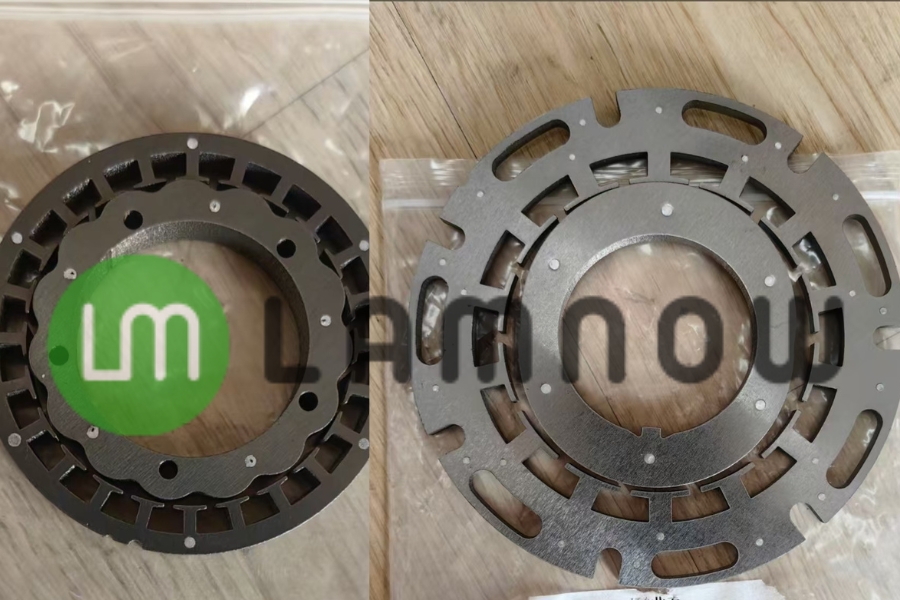
Are you looking for a professional, reliable, and efficient motor, generator, and transformer lamination manufacturing partner? Feel free to contact us. Send us your drawings—we offer motor compound stamping, progressive stamping services and expert recommendations.

